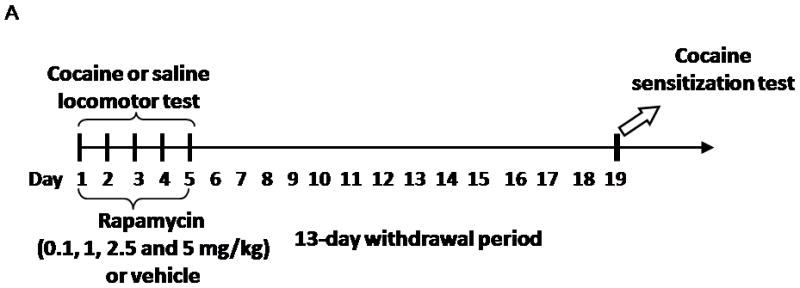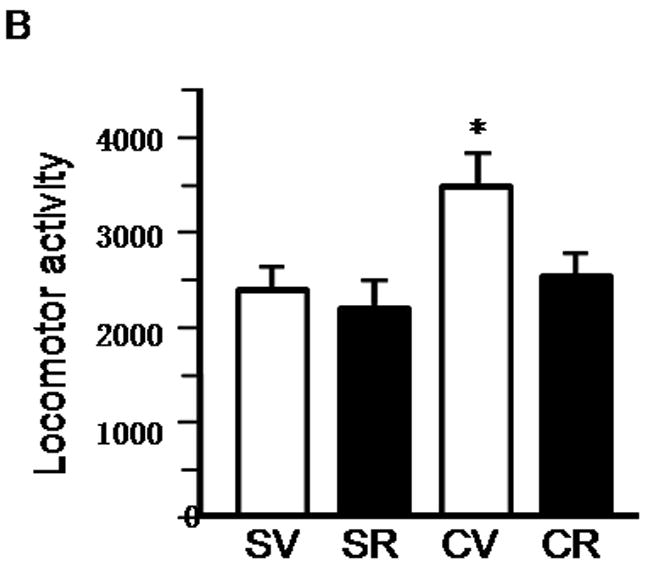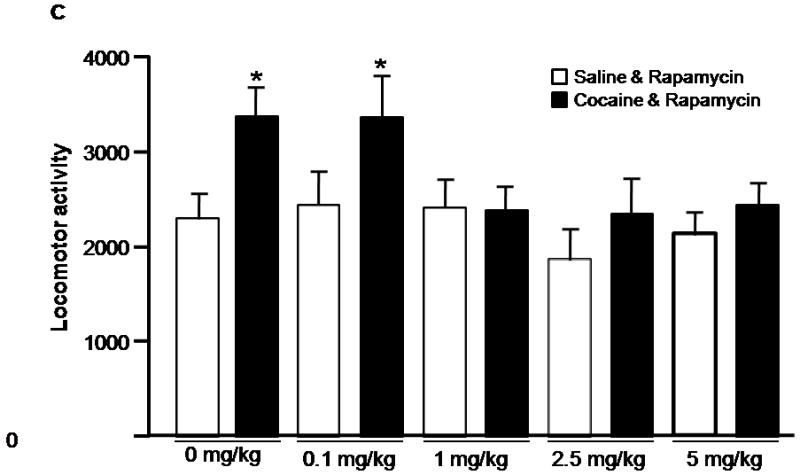Figure 2.



Inhibition of mTOR by rapamycin blocks induction of cocaine-induced locomotor sensitization. A, Schematic diagram showing timing of drug treatment and locomotor activity monitored. B, Rapamycin blocks cocaine induced locomotor sensitization. Rats were co-injected with rapamycin (5 mg/kg) and cocaine (15 mg/kg) or vehicle, during the first five days of treatment. Locomotor activity data (the number of beam breaks) acquired from the test day are presented as mean and SEM (n=8). The cocaine-treated group (CV) showed significantly higher locomotor activity than that of cocaine and rapamycin-treated (CR), saline/rapamycin-treated (SR), and control groups (SV). * indicates p<0.05 following one-way ANOVA. C, Dose-response of rapamycin’s effects on induction of cocaine-induced locomotor sensitization. Rapamycin at 1, 2.5 and 5 mg/kg, but not at 0.1 mg/kg, blocked induction of cocaine-induced locomotor sensitization. Data are presented as mean and SEM (0 mg/kg and 5 mg/kg, n=8; 0.1 mg/kg, n=6; 1 mg/kg, n=10; and 2.5 mg/kg, n=4). * indicates significant difference between cocaine-vehicle (CV) and saline-vehicle (SV) groups following individual t-tests (p=0.019). No significant differences were found between CR and vehicle groups (SR, SV; p > 0.05 using individual t-tests).
